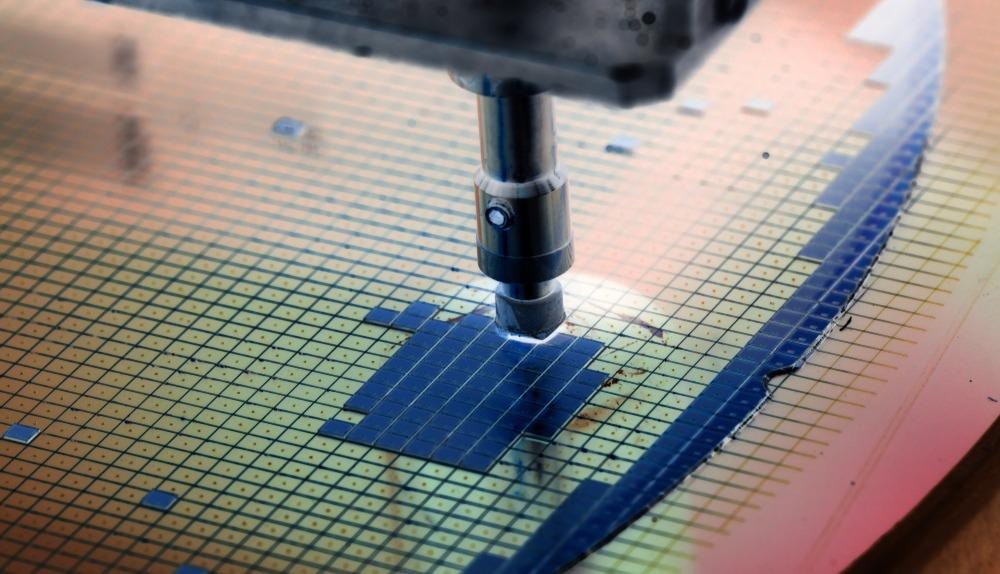
Image Credit: Macro photo/Shutterstock.com
There is a global shortage of semiconductors. The delay was initially generated by the pause in production early in the coronavirus pandemic. However, owing to worldwide lockdowns and changing habits such as home-working, the pandemic has resulted in a boom in sales of games consoles, 5G-enabled mobile phones, TVs, and home computers – all of which require semiconductors. Coupled with the increasing electrification of vehicles, this has caused a surge in the demand for semiconductor chips – unfortunately, supply just cannot keep up.
What’s a Semiconductor Chip?
Semiconductor chips are found in thousands of electronic devices; they are what makes them function – without them, nothing works. The market consists of seven component types: analog, discrete, logic, memory, microcomponent, optoelectronic, and sensors.
Memory chips make up the majority and, together with central processing units, their use in computers helped the industry grow rapidly between 1997 and 2007. The market grew further with the introduction of smartphones requiring mobile processors and then cloud computing.
Semiconductors in the Automotive Industry
Cars are increasingly becoming electronic devices, particularly as they move towards electrification. The semiconductor shortage has seriously impacted the automotive industry, which relies on semiconductors not just for their electric and hybrid vehicles, but traditional cars too.
Microcomponents are a crucial element of electronic devices and are used in large numbers in intelligent cars, powertrains, and next-generation chassis and safety systems. Analog semiconductor components are also required for power management and autonomous and electric vehicles (EVs).
In addition to electrification, cars are increasingly implementing artificial intelligence (AI), particularly in advanced driver-assistance systems (ADAS), LiDAR, and safety and convenience functions where the attention is on assisted and autonomous driving through sensing, computing and storage/memory, and infotainment i.e., personal navigation and entertainment.
But as cars become more intelligent, they require a greater number of semiconductors; in fact, five times more semiconductors are needed in a fully autonomous vehicle than a partially automated equivalent. But currently, the semiconductors needed are just not available.
Fabulous Fabs
The semiconductor shortage has highlighted the need to ensure supply chains are resilient. Most major car manufacturers are scaling back output and are unlikely to meet their 2021 targets because they cannot get hold of semiconductors.
Numerous American-based automakers, together with medical device manufacturers, lobbied the Biden administration to subsidize new chip factory construction. Subsequently, several large companies have committed billions of dollars doing just that, including Intel who plans to spend $20 billion building two new chip factories – called fabs – in Arizona.
While expensive, these fabs could be a gamechanger and help mitigate semiconductor chip shortage, especially through the incorporation of AI.
AI is the ability of computers to imitate human behavior and decision-making based on the analysis of data using predefined rules. This could be applied to legacy equipment, enabling machines to produce semiconductor chips in a manner they were not originally intended to. This could encourage optimization of production and therefore better yields.
Optimization could be key to mitigating the shortage, with a particular focus on reinvesting in established technologies alongside computation and AI to develop new materials and device designs. Reimagining the inspection process during manufacture could also be beneficial; AI and predictive systems could continuously scan for defects in real-time to help improve product quality, increase yield, and reduce waste.
The Future of Semiconductors
The global shortage of semiconductors is likely to continue in the short term, but the long-term future of the industry is likely to be secure, and it will continue to grow, driven by the communications, data processing, and automotive sectors. In addition, AI will contribute not only by optimizing their manufacture but by increasing the demand for the chips that are key to everything we use.
References and Further Reading
Orlando, J (2021), Op-ed: Using AI to help solve today’s semiconductor problems, CNBC: https://www.cnbc.com/2021/04/07/op-ed-ai-can-help-solve-todays-semiconductor-problems-.html. Accessed 22 April 2021.
PwC (2019), Opportunities for the global semiconductor market, PwC: https://www.pwc.com/gx/en/industries/tmt/publications/global-tmt-semiconductor-report-2019.html. Accessed 22 April 2021.
Sweney, M (2021), Global shortage in computer chips 'reaches crisis point', The Guardian: https://www.theguardian.com/business/2021/mar/21/global-shortage-in-computer-chips-reaches-crisis-point. Accessed 22 April 2021.
Nellis, S (2021), Automakers, medical device firms ask Biden for U.S. chip factory subsidies, Reuters: https://www.reuters.com/article/us-usa-semiconductors/automakers-medical-device-firms-ask-biden-for-u-s-chip-factory-subsidies-idUSKBN2AI153. Accessed 22 April 2021.
James, S (2021), New Fabs Crop Up Globally in 2021 as Chip Crisis Continues, All About Circuits: https://www.allaboutcircuits.com/news/new-fabs-crop-globally-in-2021-chip-crisis-continues/. Accessed 22 April 2021.
Disclaimer: The views expressed here are those of the author expressed in their private capacity and do not necessarily represent the views of AZoM.com Limited T/A AZoNetwork the owner and operator of this website. This disclaimer forms part of the Terms and conditions of use of this website.